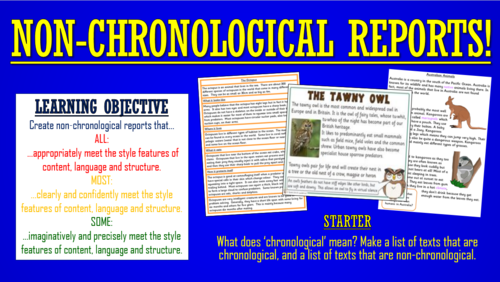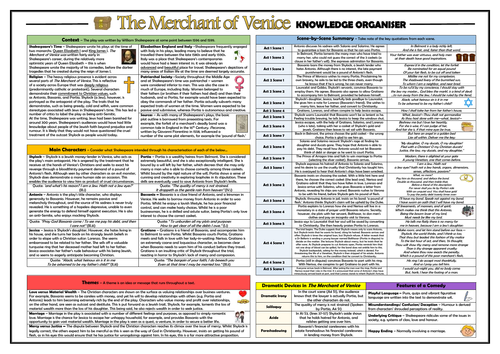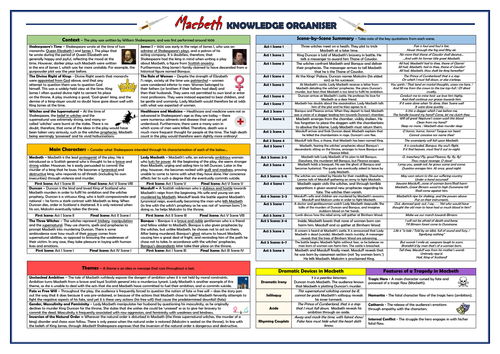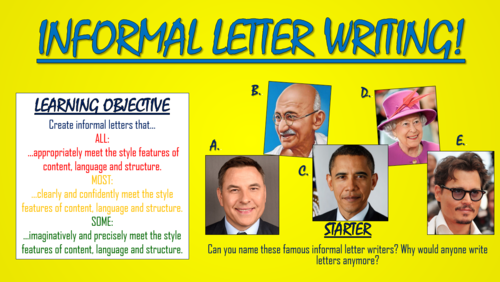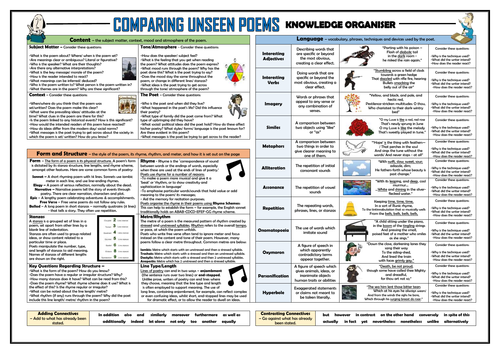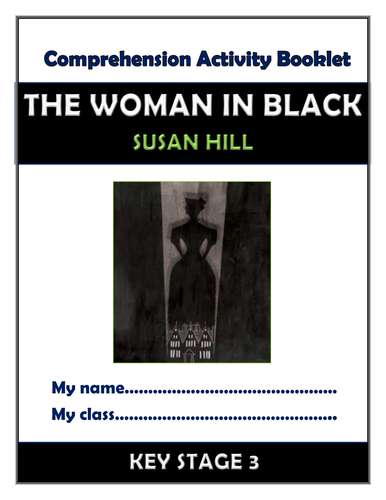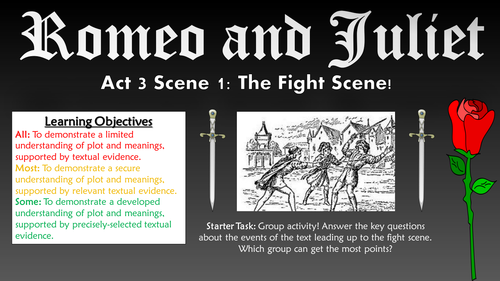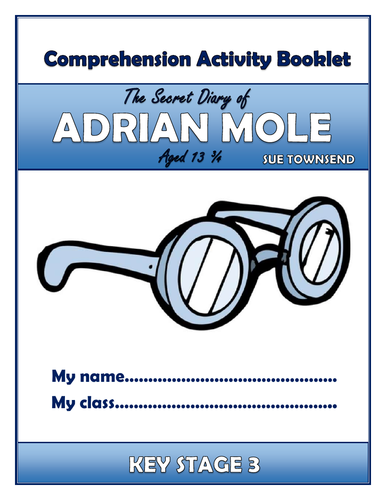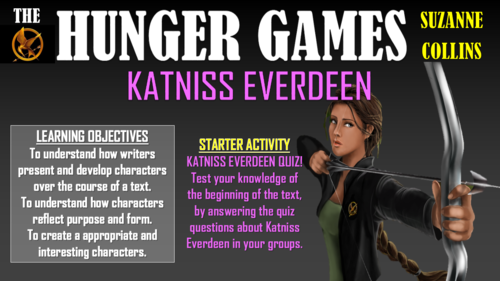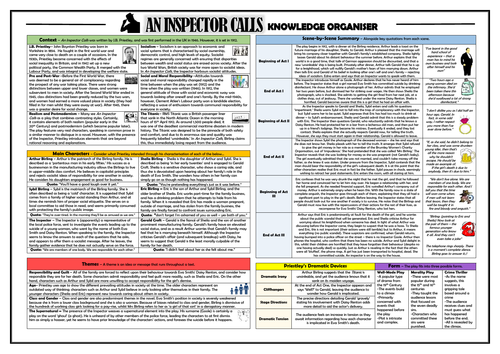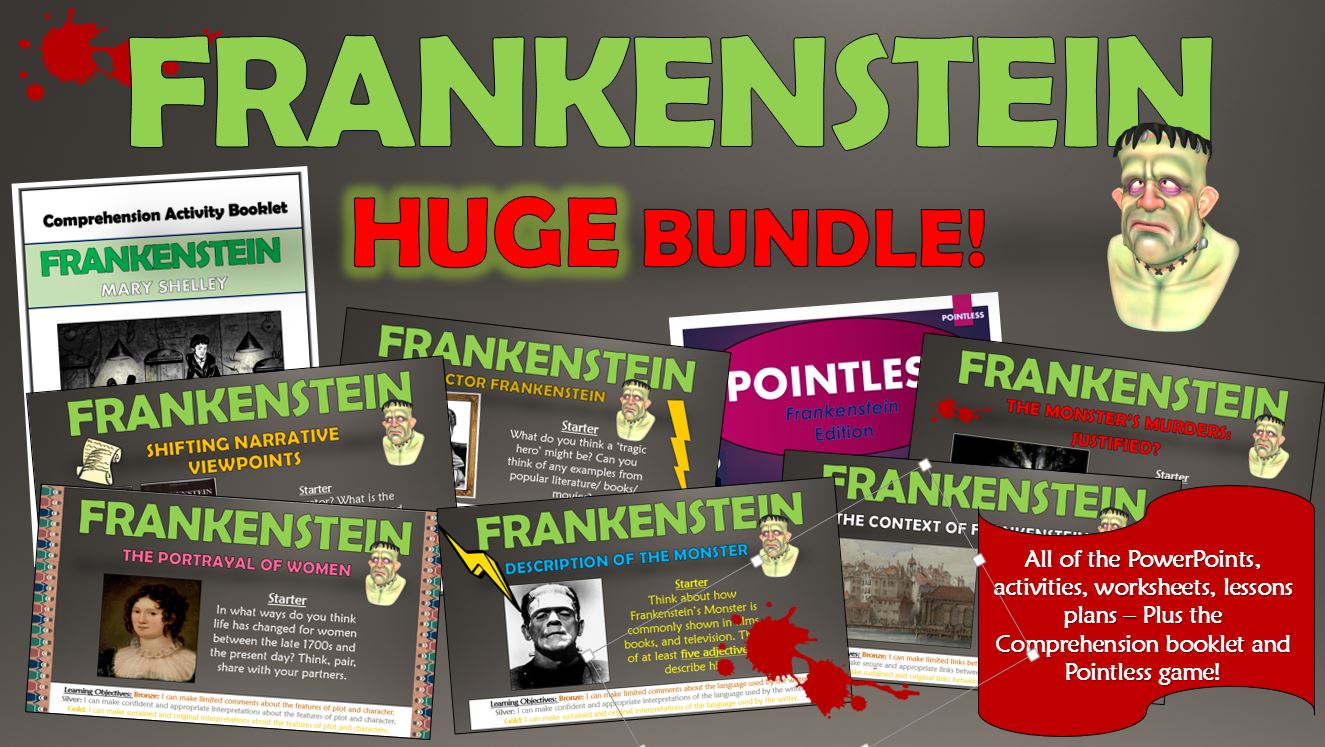
3k+Uploads
1906k+Views
2238k+Downloads
World languages

Non-Chronological Reports!
This stimulating and informative lesson develops students’ skill in creating non-chronological reports that precisely meet the content, language and structural features of the form. In particular, they gain an in-depth understanding of how non-chronological reports are ordinarily set out on the page, what information should be included within them, and what style they should be written in, in order to meet form and purpose. These resources contain 3 example non-chronological reports, differentiated by the accessibility of their language.
Students follow a clear and logical learning journey, in which they:
-Define what non-chronological letters are and clarify their purpose;
Establish the structural features of non-chronological letters;
-Work collaboratively to identify and analyse the content and language features in further model examples of non-chronological reports;
-Create a success criteria for effective non-chronological reports;
-Write their own non-chronological reports, using a planning sheet (if needed) and the techniques that they have learnt;
-Peer/self-assess their writing attempts.
There are enough resources here really for two lessons, including:
-Visually engaging whole-lesson PowerPoint;
-Non-chronological reports x 3 (based on tennis, great white sharks, and Dubai)
-Non-chronological reports structure worksheet;
-Non chronological reports planning sheet;
-Step-by-step lesson plan.
All images are licensed for commercial use, and are cited on the final page of the slide.

The Merchant of Venice Knowledge Organiser/ Revision Mat!
This detailed and visually-appealing resource offers a complete reference point for students learning or revising William Shakespeare’s ‘The Merchant of Venice.’ It contains comprehensive sections on:
Context;
Scene by Scene Summary (with quotes);
Main Characters;
Themes;
Dramatic Devices;
Features of Comedy.
Key words and ideas are underlined for easy reference. The resource is designed to be printed onto A3, and is provided as both a PDF and a Word version (so that you can edit if you want to). All images used are licensed for commercial use and are cited on a separate document (included).

Of Mice and Men Knowledge Organiser/ Revision Mat!
This detailed and visually-appealing resource offers a complete reference point for students learning or revising John Steinbeck's 'Of Mice and Men.' It contains comprehensive sections on:
- Context;
- Chapter by Chapter Summary (with quotes);
- Main Characters;
- Themes;
- Literary Features;
- The Origins of the Book Title.
Key words and ideas are underlined for easy reference. The resource is designed to be printed onto A3, and is provided as both a PDF and a Word version (so that you can edit if you want to). All images used are licensed for commercial use and are cited on a separate document (included).

Macbeth Knowledge Organiser/ Revision Mat!
This detailed and visually-appealing resource offers a complete reference point for students learning or revising William Shakespeare's 'Macbeth.' It contains comprehensive sections on:
- Context;
- Scene by Scene Summary (with quotes);
- Main Characters;
- Themes;
- Dramatic Devices;
- Features of Tragedy.
Key words and ideas are underlined for easy reference. The resource is designed to be printed onto A3, and is provided as both a PDF and a Word version (so that you can edit if you want to). All images used are licensed for commercial use and are cited on a separate document (included).
Bundle Sale

The Merchant of Venice Huge Bundle!
THIS BUNDLE CONTAINS ALL OF THE MERCHANT OF VENICE LESSONS, IN ADDITION TO THE COMPREHENSION ACTIVITY BOOKLET, THE MERCHANT OF VENICE KNOWLEDGE ORGANISER, AND THE POINTLESS GAME!
This engaging, varied, and informative scheme of learning is designed to help students gain understanding, assessment skills, and key interpretations of William Shakespeare’s ‘The Merchant of Venice.’ Made up of a wide-range of interesting and exciting lessons, students should complete this scheme having gathered vital skills in: interpreting the significant meanings of the play, understanding the writer’s ideas within the play, analysing key characters, settings, and themes, and understanding Shakespeare’s language devices.
Stimulating, visual, and easily adaptable, these lessons provide suggested learning objectives and outcomes for students of a wide-range of abilities - The vast majority of tasks are differentiated to allow for different abilities and needs in your classroom. Each lesson loosely follows this logical learning journey to ensure that students learn in bite-size steps:
Engaging
Defining/ Understanding
Identifying/Remembering
Analysing/ Creating
Peer or self evaluating.
All of the lessons are interactive, employ a variety of different teaching and learning methods and styles, and are visually-engaging. Resources, worksheets, and lesson plans are all provided.
Bundle Sale

Animal Farm Huge Bundle!
THIS BUNDLE CONTAINS ALL OF THE ANIMAL FARM LESSONS, IN ADDITION TO THE 30-PAGE ANIMAL FARM COMPREHENSION BOOKLET, THE KNOWLEDGE ORGANISER AND THE POINTLESS GAME!
This engaging, varied, and informative scheme of learning is designed to help students gain a valuable understanding of George Orwell’s allegorical novella ‘Animal Farm.’ The lessons enable students to gain a comprehensive understanding of the key features of plot, character, context, and language, in addition to considering the key messages being offered by Orwell.
All of the resources that you need are included in the bundle: informative and engaging whole lesson PowerPoints, worksheets, activities, and lesson plans.
The bundle is made up of a wide-range of interesting and exciting lessons, including:
- The Russian Revolution;
- Old Major’s Dream;
- The Rise of the Pigs;
- Dictatorship;
- Squealer;
- The Ending (Orwell’s Message)
Stimulating, visual, and easily adaptable, these lessons provide suggested learning objectives and outcomes for students of a wide-range of abilities - The vast majority of tasks are differentiated to allow for different abilities and needs in your classroom. Each lesson loosely follows this logical learning journey to ensure that students learn in bite-size steps:
- Engaging
- Defining/ Understanding
- Identifying/Remembering
- Analysing/ Creating
- Peer or self evaluating.
All of the lessons are interactive, employ a variety of different teaching and learning methods and styles, and are visually-engaging.
Bundle Sale

The Hunger Games Huge Bundle!
THIS BUNDLE CONTAINS ALL OF THE HUNGE GAMES LESSONS, IN ADDITION TO BOTH OF THE COMPREHENSION BOOKLETS, THE KNOWLEDGE ORGANISER AND THE POINTLESS GAME!
This engaging, varied, and informative scheme of learning is designed to help students gain understanding, assessment skills, and key interpretations of Suzanne Collins’ ‘The Hunger Games.’ Made up of a wide-range of interesting and exciting lessons, students should complete this scheme having gathered vital skills in: interpreting the significant meanings of the text, understanding the writer’s ideas within the text, identifying the traits of key characters, settings, and themes, understanding dramatic and language devices, and relating the text to its social and historical context.
Stimulating, visual, and easily adaptable, these lessons provide suggested learning objectives and outcomes for students of a wide-range of abilities - The vast majority of tasks are differentiated to allow for different abilities and needs in your classroom. Each lesson loosely follows this logical learning journey to ensure that students learn in bite-size steps:
Engaging
Defining/ Understanding
Identifying/Remembering
Analysing/ Creating
Peer or self evaluating.
All of the lessons are interactive, employ a variety of different teaching and learning methods and styles, and are visually-engaging. Resources, worksheets, and lesson plans are all provided.

Informal Letter Writing!
This stimulating and informative lesson develops students’ skill in creating informal letters that precisely meet the content, language and structural features of the form. In particular, they gain an in-depth understanding of how informal letters should be set out on the page, what information should be included within them, and what style they should be written in, in order to meet form, audience and purpose.
Students follow a clear and logical learning journey, in which they:
-Understand why letter writing is still important in the present day;
-Unjumble a model example of an informal letter in order to establish its structure;
-Work collaboratively to identify and analyse the content and language features in further model examples of informal letters;
-Create a success criteria for effective informal letters (although a ready-made success criteria is included);
-Write their own informal letters, using a structure strip and helpsheet (if needed) and the techniques that they have learnt;
-Peer/self-assess their writing attempts.
There are enough resources here really for two lessons, including:
-Visually engaging whole-lesson PowerPoint;
-Informal letters x 3 (based on The Simpsons, Batman, and Harry Potter characters)
-Informal letters structure strip;
-Informal letters helpsheet;
-Step-by-step lesson plan.
All images are licensed for commercial use, and are cited on the final page of the slide.

Comparing Unseen Poetry Knowledge Organiser/ Revision Mat!
This detailed and visually-appealing resource offers a complete reference point for students preparing for the ‘Unseen Poetry’ elements of English Literature examinations. It is ideal for GCSE and A Level students, as it contains detailed and comprehensive sections (including explanations, examples and key questions) on:
Content -Subject Matter, Context, Tone, Atmosphere, The Poet;
Language - Similes, Metaphors, Interesting Adjectives, Interesting Verbs, Imagery, Onomatopoeia, Alliteration, Assonance, Personification, Hyperbole, Oxymoron, Repetition;
Form and Strcuture - Common Forms, Rhyme/ Rhyme Schemes, Metre, Rhythm, Stanzas, Line Type, Line Length.
Plus lists of Adding Connectives and Contrasting Connectives for use when comparing.
Key words and ideas are underlined for easy reference. The resource is designed to be printed onto A3, and is provided as both a PDF and a Word version (so that you can edit if you want to). All images used are licensed for commercial use and are cited on a separate document (included).
Bundle Sale

Stone Cold Big Bundle!
THIS BUNDLE CONTAINS ALL OF THE STONE COLD LESSONS, IN ADDITION TO THE COMPREHENSION BOOKLET, THE KNOWLEDGE ORGANISER AND THE POINTLESS GAME!
This engaging, varied, and informative scheme of learning is designed to help students gain understanding, assessment skills, and key interpretations of Robert Swindells’ ‘Stone Cold.’ Made up of a wide-range of interesting and exciting lessons, students should complete this scheme having gathered vital skills in: interpreting the significant meanings of the text, understanding the writer’s ideas within the text, identifying the traits of key characters, settings, and themes, understanding dramatic and language devices, and relating the text to its social and historical context.
Stimulating, visual, and easily adaptable, these lessons provide suggested learning objectives and outcomes for students of a wide-range of abilities - The vast majority of tasks are differentiated to allow for different abilities and needs in your classroom. Each lesson loosely follows this logical learning journey to ensure that students learn in bite-size steps:
- Engaging
- Defining/ Understanding
- Identifying/Remembering
- Analysing/ Creating
- Peer or self evaluating.
All of the lessons are interactive, employ a variety of different teaching and learning methods and styles, and are visually-engaging. Resources, worksheets, and lesson plans are all provided.

The Woman in Black - KS3 Comprehension Activities Booklet!
This resource booklet contains a wide range of age-appropriate, engaging, and meaningful comprehension activities for use throughout the reading of Susan Hill's 'The Woman in Black.' Teachers have found them particularly useful in comprehension or guided reading sessions. They are perfect for aiding the progress of children towards meeting the KS3 expectations within the new National Curriculum framework. Children have found these resources extremely engaging, and for teachers there is explicit information within each task regarding which comprehension strands the task is designed to demonstrate. They also relate to key extracts, characters, and themes from the story, ensuring that children gain a deep understanding of the text.
Activities within the booklet include:
- 'Context: The Rural North' - to enable students to demonstrate that they can: 'Know the purpose, audience and context of the writing and drawing on this knowledge to support comprehension.'
- 'Hill's Description - The Horse and Trap' - to enable students to demonstrate that they can: 'Know how language, including figurative language, vocabulary choice, grammar, text structure and organisational features, present meaning.'
- 'Mr Jerome' and 'The Woman in Black' - to enable students to demonstrate that they can: 'Study setting, plot, and characterisation, and the effects of these.'
- 'Vocabulary Inspector' - to enable students to demonstrate that they can: 'Learn new vocabulary, relating it explicitly to known vocabulary and understanding it with the help of context and dictionaries.'
Plus many, many more activities (the booklet is 21 pages in length!) I've also added it as a PDF in case the formatting differs on your computer.
All images are licensed for commercial use, and are cited on a separate document (included).
Bundle Sale

Blood Brothers Huge Bundle!
THIS BUNDLE CONTAINS ALL OF THE ‘BLOOD BROTHERS’ LESSONS, IN ADDITION TO THE KNOWLEDGE ORGANISER, THE 30-PAGE COMPREHENSION BOOKLET, AND THE POINTLESS GAME!
This engaging, varied, and informative scheme of learning is designed to help students gain understanding, assessment skills, and key interpretations of Willy Russell’s play ‘Blood Brothers.’ Made up of a wide-range of interesting and exciting lessons, students should complete this scheme having gathered vital skills in: interpreting the significant meanings of the play, understanding the writer’s ideas within the text, analysing key characters, settings, and themes, and understanding Russell’s language devices.
Stimulating, visual, and easily adaptable, these lessons provide suggested learning objectives and outcomes for students of a wide-range of abilities - The vast majority of tasks are differentiated to allow for different abilities and needs in your classroom. Each lesson loosely follows this logical learning journey to ensure that students learn in bite-size steps:
Engaging
Defining/ Understanding
Identifying/Remembering
Analysing/ Creating
Peer or self evaluating.
All of the lessons are interactive, employ a variety of different teaching and learning methods and styles, and are visually-engaging. Resources, worksheets, and lesson plans are all provided.
Bundle Sale

The Curious Incident of the Dog in the Night-time - Big Bundle!
This resource bundle contains all of the ‘Curious Incident of the Dog in the Night-time’ lessons, the comprehension activities booklet and the knowledge organiser!
The engaging and thought-provoking series of lessons has been devised to provide students with a well-rounded, secure understanding of the text. The entire novel is broken down in to 7 double lesson packs, meaning that there is a total of 14 individual activity sets here.
The Opening Chapters (2-19);
Chapters 23 to 47
Chapters 53 to 83
Chapters 89 to 113
Chapters 127 to 157
Chapters 163 to 197
The End of the Novel (199 to 233).
The comprehensive and colourful PowerPoint presentations guide students through a wide range of activities, including those designed to enhance the following skills: retrieval, understanding vocabulary, inference, explanation, summarising, sequencing, analaysis and deeper thinking activities.
The resources are suitable for students in either KS3 or KS4, depending upon the individual context of the school and students.

Writing Newspaper Articles!
This interesting and engaging enables students to know what newspaper articles are and why people read them, understand the features that make effective newspaper articles, and write their own interesting and appropriate newspaper articles. In particular, students learn to use a range of appropriate features in writing their own newspaper articles, including facts and opinions, jargon, testimonies, and puns. There are easily enough resources here for 2 lessons on this topic.
Over the course of their learning journey, students:
- Define and exemplify what newspapers are;
- Understand why people read newspapers;
- Understand and categorise the different techniques used by newspapers;
- Identify the features of newspapers in model examples;
- Analyse the effect of techniques in newspapers upon the reader;
- Use a wide-range of techniques in writing their own newspaper articles;
- Peer and self assess each other's newspaper article attempts.
The resources include:
-Visually engaging whole-lesson PowerPoint;
-A colourful and helpful 'Writing Newspaper Articles' Help-Sheet;
-Techniques cards for defining the key key features of newspaper articles;
-Analysing newspaper articles worksheet;
-Blank newspaper article template;
-A model example of a newspaper article;
-Helpful and comprehensive step-by-step lesson plan.
All images are licensed for commercial use, and are cited on the final page of the slide.

Romeo and Juliet: Act 3 Scene 1 - The Fight Scene!
This interesting and engaging lesson enables students to gain a detailed understanding of the fight scene in William Shakespeare’s romantic tragedy Romeo and Juliet. Students learn to demonstrate a developed understanding of the plot and meanings throughout the scene, with the support of precisely-selected textual evidence. In particular, students consider Romeo's struggle between love and honour throughout the duration of the scene, and how social demands lead him towards his demise.
The lesson utilises a range of tasks, that require students to be attentive and interactive learners. It follows this learning journey:
- Establishing the events leading up to the fight, including a discussion regarding the characters and events that make a physical confrontation inevitable;
- Reading and interpreting Act III Scene I, interpreting and inferring the key meanings;
- Understanding the key themes throughout the scene, including Romeo's struggle between love and honour;
- More closely analysing the key meanings and developments within the scene;
- Peer/self evaluating the learning in the lesson.
Included in this resource pack are:
- A well-presented, thorough, and informative, whole-lesson PowerPoint presentation;
- Resources for the reading and interpreting activity - full scene transcript with space for notes;
- A closer analysis worksheet based upon Romeo's struggle;
- A template to help scaffold the main task, complete with P.E.E instructions;
- A challenging and thought-provoking worksheet, and an answer sheet for the teacher.
All images in this resource are licensed for commercial use, and are cited on the final slide of the lesson presentation.

The Secret Diary of Adrian Mole Comprehension Activities Booklet!
This resource booklet contains a wide range of age-appropriate, engaging, and meaningful comprehension activities for use throughout the reading of Sue Townsend’s ‘The Secret Diary of Adrian Mole, Aged 13 3/4.’ Teachers have found them particularly useful in comprehension or guided reading sessions. They are perfect for aiding the progress of children towards meeting the KS3 expectations within the new National Curriculum framework. Children have found these resources extremely engaging, and for teachers there is explicit information within each task regarding which comprehension strands the task is designed to demonstrate. They also relate to key extracts, characters, and themes from the story, ensuring that children gain a deep understanding of the text.
Activities within the booklet include:
‘Context: 1980s Britain - to enable students to demonstrate that they can: ‘Know the purpose, audience and context of the writing and drawing on this knowledge to support comprehension.’
‘Townsend’s Language Devices’ - to enable students to demonstrate that they can: ‘Know how language, including figurative language, vocabulary choice, grammar, text structure and organisational features, present meaning.’
‘Bert Baxter Character Profile’ - to enable students to demonstrate that they can: ‘Study setting, plot, and characterisation, and the effects of these.’
‘Vocabulary Inspector’ - to enable students to demonstrate that they can: ‘Learn new vocabulary, relating it explicitly to known vocabulary and understanding it with the help of context and dictionaries.’
Plus many, many more activities (the booklet is 23 pages in length!) I’ve also added it as a PDF in case the formatting differs on your computer.
All images are licensed for commercial use, and are cited on a separate document (included).

The Hunger Games - Katniss Everdeen!
This engaging and informative lesson enables students to understand how the lead protagonist of Suzanne Collins’ ‘The Hunger Games’ – Katniss Everdeen - develops as a character throughout the novel. In doing so, students learn how she develops and acquires the key skills, characteristics, beliefs, and values to become the complete dystopian heroine.
The lesson follows a step-by-step learning journey, in which children learn through:
Comprehending how Katniss is initially introduced to the reader;
Reading extracts from Chapters 3, 7 and 14 of The Hunger Games, identifying how Katniss’ character develops;
Analysing how her character fits the role of the ‘Dystopian Hero/Heroine’, and matching her traits to the different features of this character form;
Applying their understanding by creating their own Dystopian Hero/Heroine;
Self assessing their learning attempts.
Included is:
Whole lesson PowerPoint - colourful and comprehensive;’
Extracts from The Hunger Games (from Chapters 3, 7, and 14);
Character Profile for Katniss Everdeen;
Blank Template for Creating a Dystopian Hero/Heroine;
A comprehensive lesson plan;
All resources are provided in Word (for easy editing) and PDF (to ensure formatting remains fixed between different computers).
There are also opportunities for group learning, speaking and listening, peer assessment, and whole class discussion. I originally used these resources with year 8 classes, however colleagues have used them for between years 5 and 10 with some adaptations.
All images are licensed for commercial use, and image rights are listed on the last page of the presentation.

An Inspector Calls Knowledge Organiser/ Revision Mat!
This detailed and visually-appealing resource offers a complete reference point for students learning or revising J.B. Priestley's 'An Inspector Calls.' It contains comprehensive sections on:
- Context;
- Scene by Scene Summary (with quotes);
- Main Characters;
- Themes;
- Priestley's Dramatic Devices;
- Features of Form.
Key words and ideas are underlined for easy reference. The resource is designed to be printed onto A3, and is provided as both a PDF and a Word version (so that you can edit if you want to). All images used are licensed for commercial use and are cited on a separate document (included).

Writing Emails!
This stimulating and informative lesson develops students’ skill in creating emails that precisely meet the needs of their audience and purpose. In particular, they gain an in-depth understanding of how emails should be structured, what information should be included within them, and what style they should be written in, in order to meet their audience and purpose.
Students follow a clear and logical learning journey, in which they:
-Understand when and where emails are an appropriate form of communication;
-Establish the structural features of emails;
-Work collaboratively to identify and analyse the content and language features in further model examples of emails;
-Understand how email features are influenced by the purpose and audience of the email;
-Create a success criteria for writing emails (although a ready-made success criteria is included);
-Write their own emails, using a helpsheet (if needed) and the techniques that they have learnt;
-Peer/self-assess their writing attempts.
There are enough resources here really for two lessons, including:
-Visually engaging whole-lesson PowerPoint;
-Email examples x 3
-Email purpose and audience sorting cards;
-Writing emails helpsheet;
-Structure of emails worksheet;
-Step-by-step lesson plan.
All images are licensed for commercial use, and are cited on the final page of the slide.
Bundle Sale

Frankenstein Huge Bundle!
THIS BUNDLE CONTAINS ALL OF THE FRANKENSTEIN LESSONS, PLUS THE 30 PAGE COMPREHENSION BOOKLET, THE KNOWLEDGE ORGANISER AND THE POINTLESS GAME!
This engaging, varied, and informative scheme of learning is designed to help students gain a valuable understanding of Mary Shelley's horror classic 'Frankenstein.' The lessons enable students to gain a comprehensive understanding of the key features of plot, character, context, and language, in addition to considering the key themes and ideas running throughout the text.
All of the resources that you need are included in the bundle: informative and engaging whole lesson PowerPoints, worksheets, activities, and lesson plans.
The bundle is made up of a wide-range of interesting and exciting lessons, including:
- The Context of Frankenstein;
- Victor Frankenstein - The Tragic Hero;
- Shifting Narrative Viewpoints:
- Shelley's Description of the Monster;
- The Monster's Murders - Justified?
- The Frankenstein Pointless Game
- Frankenstein Comprehension Booklet
- Frankenstein Knowledge Organiser
Stimulating, visual, and easily adaptable, these lessons provide suggested learning objectives and outcomes for students of a wide-range of abilities - The vast majority of tasks are differentiated to allow for different abilities and needs in your classroom. Each lesson loosely follows this logical learning journey to ensure that students learn in bite-size steps:
- Engaging
- Defining/ Understanding
- Identifying/Remembering
- Analysing/ Creating
- Peer or self evaluating.
All of the lessons are interactive, employ a variety of different teaching and learning methods and styles, and are visually-engaging.

